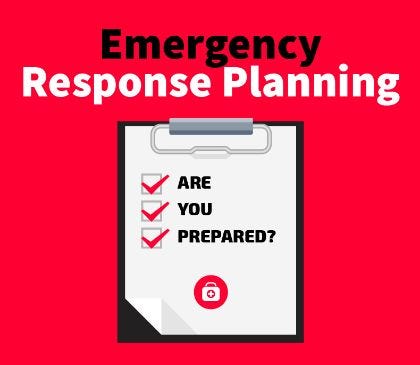How to Create an Effective Emergency Action Plan for Your Office
- Aug 31, 2020

How to Create an Effective Emergency Action Plan for Your Office
Ensuring the safety of your employees during an emergency takes planning. It's worth it, though, because a well-executed emergency action plan (EAP) can save lives.
Step 1: Build Your Life-saving Dream Team
The strength of your EAP depends on the commitment of your team. To help ensure company-wide buy-in, invite a diverse set of employees to participate.
Step 2: Conduct a Risk Assessment
Next, task your dream team to identify potential hazards and vulnerabilities within your organization.
They should consider deficiencies in building construction, process systems, security, protection systems, and loss prevention programs. They should also determine whether or not you have enough AEDs and bleeding control kits to serve your population!
Finally, they'll want to make sure that they know how to identify, locate, and reach all at-risk individuals in case of an emergency. (Centers for Disease Control).
Sound a little overwhelming? Your local emergency medical services (EMS), fire department, or law enforcement officers may be able to assist with a risk assessment.
Step 3: Create an Inventory
Make sure you take note of AEDs, first aid kits, bleeding control kits, fire extinguishers, for example. Share your findings with your colleagues so everyone knows where everything is!
Step 4: Write an Emergency Action Plan
The Occupational Safety and Health Administration (OSHA), FEMA, and the Centers for Disease Control (CDC) all offer a wealth of information about developing an EAP and easy-to-use templates. Regardless of which template you choose to follow, here are a few elements that your EAP should cover.
- Contact information of your designated emergency personnel.
- Evacuation routes.
- Contact information of your local first-responders.
- Reporting and evacuation procedures for medical emergencies, fires, active shooters, severe weather, etc...
- A list of people who are first aid, CPR, and AED certified within your company.
Step 5: Develop an On-Site Emergency Response Team
Designate cool-headed and well-respected emergency response leaders within your organization to coordinate drills, lead evacuation (as necessary), spearhead communication, conduct a headcount, and to communicate detailed information to 911 dispatch and emergency responders.
Step 6: Offer Training
Make sure your staff has the training they need to respond to an emergency.
Bolster your EPA and boost confidence by offering first aid, Stop the Bleed, CPR, and AED training to your entire team.
For more information about First Aid and CPR training, check out these articles:
- What Do You Learn During CPR Training
- CPR and AED Awareness Week
- 10 Reasons Why You Should Learn CPR
- Encouraging CPR Training in Your Business
- (Almost) Everything You Need to Know About CPR and AEDs
Step 7: Practice Makes Perfect!
Your EAP can help prevent injury and can dramatically minimize damage. However, it's only as good as the people who are carrying it out. We recommend scheduling drills every six months and routinely offering your team the opportunity to become CPR certified.
To learn more about First Aid and CPR Certification and AED training, AED best practices, or AED and defibrillator service and preventative maintenance programs, contact AED.com at 800-544-0004 or email us at customerservice@cardiopartners.com.
DISCLAIMER: Information and resources found on the aed.com website/blog is intended to educate, inform, and motivate readers to make their health and wellness decisions after consulting with their healthcare provider. The authors are not healthcare providers. NO information on this site should be used to diagnose, treat, prevent, or cure any disease or condition.





 CALL US:
CALL US: